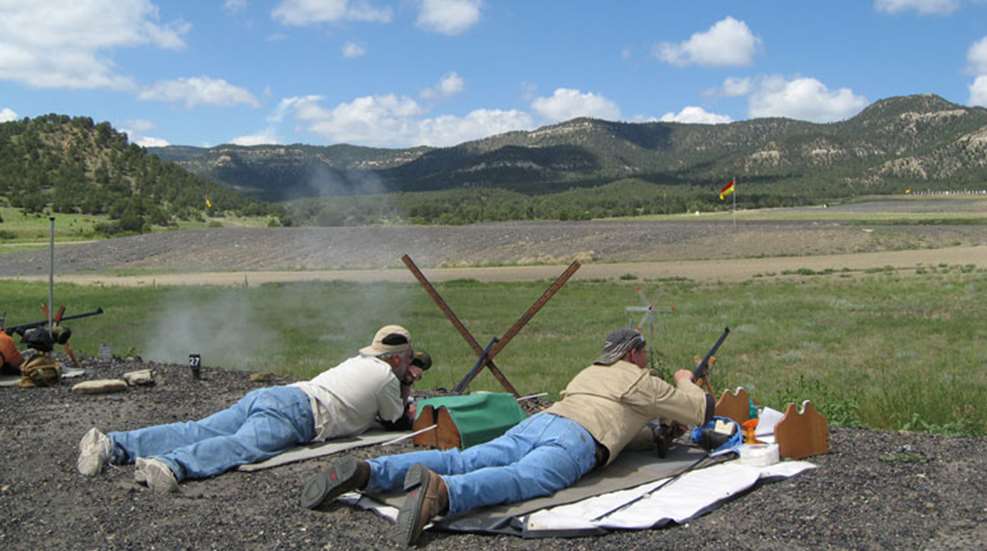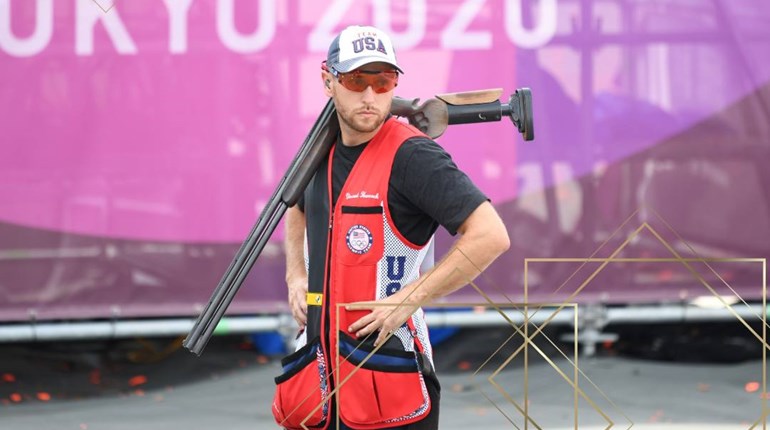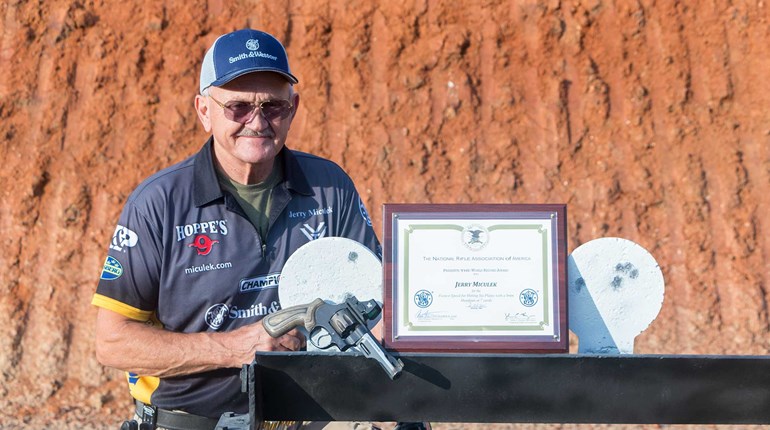
Imagine what kind of a firearm it would take to accurately shoot 1,500 yards. To put this feat into perspective, we are talking shooting a projectile the distance of 15 football fields! These days, one could mention several examples of firearms that are capable of shooting accurately at this distance. But let’s imagine that the year is 1874 in the Texas panhandle, you are one of 28 men under attack by as many as 700 Comanche, Cheyenne and Kiowa warriors, and you just witnessed a 24-year-old named Billy Dixon shoot an enemy warrior off his horse almost a mile away. Now, given some background, what kind of firearm would it take to shoot at what was later recorded as 1,538 yards? The answer is the legendary Sharps rifle.
Very few rifles besides the Sharps were as instrumental in taming the American West. On the shoulder of a skilled marksman, no other rifle could accurately deliver bullets on long-range targets better than the Sharps rifle. These rifles were the best of that era’s firepower used by frontiersman, buffalo hunters, scouts and soldiers. Thanks to the unparalleled accuracy of the Sharps, Billy Dixon lived to fight at the Battle of Buffalo Wallow where he again, using his Sharps rifle, successfully defended his surrounded position from a band of Kiowa and Comanche. This action earned Billy Dixon the Congressional Medal of Honor for gallantry in combat. To this day, only seven other civilians in U.S. History have earned this prestigious award.
Christian Sharps began working on his series of rifles in 1848 in Philadelphia, Pa. The Sharps Rifle Manufacturing Company supplied rifles to the U.S. Government until its closing in 1881. These rifles saw action in the Civil War and in the decades following known as the Indian Wars. Since then, these and similar rifles have been used in competition and by hunters who value the more traditional methods of harvesting game animals. Each year, at the NRA Whittington Center in Raton, N.M., around 100 competitors gather and shoot shoulder-to-shoulder in what is known as the NRA Black Powder Target Rifle Creedmoor and Mid-Range National Championships. (Visit the NRA’s Whittington Center at www.nrawc.org.)
These matches are held over a week-long period each summer in the high desert at the feet of Northeastern New Mexico’s Sangre de Cristo Mountains. This is exactly where the Santa Fe Trail makes its home stretch, and many of these rifles made their lasting impression in American history. The long-range shooting conditions and the unpredictable weather make the NRA Whittington Center the ultimate host for these matches, providing shooters with the absolute best in competition. Men, women and even junior shooters from all over the world travel to compete for trophies, rifles, awards and merchandise, and of course, ultimate bragging rights in the Black Powder Target Rifle community. (Visit the NRA’s Black Powder Target Rifle website here.) Also, be sure to check out the other information regarding National Records, shooter classifications, rulebooks and information regarding other NRA Competitive Shooting programs.
The NRA BPTR Creedmoor Championships are modeled after the original single-shot cartridge rifle matches in Long Island, N.Y., in 1874 at the Creed Farm. This is a two-day match, where on each day, competitors fire in any position in three matches (800 yards, 900 yards and 1,000 yards). Competitors have 63 minutes to shoot an unlimited number of sighting shots before firing 10 shots for “record” in each match (distance). At the end of each day, winners are determined, and after the second day aggregate scores, for each day’s shooting, determine who will be the NRA BPTR Creedmoor National Champion. The NRA BPTR Creedmoor Championships are shot in accordance with the NRA Black Powder Target Rifle Rulebook. The NRA BPTR Creedmoor National Champion receives the Castle Trophy and a Sharps rifle from CPA Corporation.
The Mid-Range Position Championship is also a two-day event. Shooters fire up to four sighting shots and ten shots for “record” in the standing position or offhand at 200 yards. The competitors then move back to the 300-yard line firing up to four sighting shots and another 10 shots for “record” from the sitting or kneeling positions using crossed sticks. After 200 and 300 yards, the shooters then move back to the 600-yard line and proceed to fire from any position. Typically, the shooters will shoot 600 yards from the prone position. Again, as with the previous distances, the competitors will fire up to four sighting shots and 10 shots for “record.” Each distance is fired within 53-minute relays. At the end of each day, the scores are compiled to determine the daily winners. At the end of the Championship, both scores, from each distance, are added together to determine the NRA BPTR Mid-Range Position National Champion. The BPTR MR Position National Champion receives the Shaffer Memorial Rifle as a trophy as well as other awards and merchandise from the NRA and black powder industry manufacturers.
The Mid-Range Prone Championships is held over two days as well. The course of fire is the exact same as the Mid-Range Position Championships, however, each distance is shot from the prone position. Competitors will fire from the 200-, 300- and the 600-yard line, respectively. These matches have 53-minute relays just like the Mid-Range Position Championships, and both Championships are shot in accordance with the NRA Black Powder Target Rifle Rulebook (www.nrahq.org/compete/RuleBooks/BlkPwdr/bp-index.pdf). At the end of the second day, both scores, from each distance, are combined to form an aggregate score, which will determine the NRA BPTR MR Prone National Champion. Competitors who shoot in all three events are known as “Ironmen.” These shooters test their durability, stamina and equipment to the limits over the week. These rugged competitors are awarded and acknowledged separately at the awards ceremony for their dedication to the historical preservation of early rifle competition in this country.
Many individuals interested in black powder competition find it difficult to get started unless they start off with the proper information. The cost of equipment is generally intimidating and exaggerated. Many feel that unless they have the best of everything they cannot compete at a National level. This is not true! You can start with a minimum investment in a black powder firearm, new or used, spotting scope with stand, sling, glove, shooting coat, shooting box and, most importantly, eye and ear protection.
NRA Black Powder Target Rifle competition allows any safe original, modern production or custom-variety black powder rifle or breech-loading rifle that is designed as a single-shot firearm. Original or modern muzzle-loading rifles, with or without sealed ignitions, are also allowed. There are also special categories for Black Powder Military rifles, Muzzleloading rifles, Scoped Black Powder rifles, and a new heavy gun class called the Tollofson Category. These categories are designed for rifles that have not been altered from their original configuration, and will be fired in matches at distances of 100 to 1,000 yards. The courses of fire use the same targets as NRA High Power Rifle competition. Black Powder Target Rifle Competition also complements the existing NRA Black Powder Cartridge Rifle Silhouette Competition shooting program, as most of the guns and gear can be used in both competitive shooting disciplines.
Any metallic sights, with or without clicks, including open, aperture and tube are allowed in competition. No optics other than sight-correcting shooting glasses, rear-sight diopters and colored, non-magnifying sight filters are permitted. Black Powder Military rifles must have sights basically of original design—typically, older-style ladder sights. Any cartridge originally designed as a black powder rifle cartridge is allowed, including .40-60, .45-70, .50-70, and others. The ammunition may be fixed, breech-seated or loaded from the muzzle. Sporting-grade black powder is the primary propellant in NRA Black Powder Target Rifle competition. Any lead or lead-alloy bullet may be used. As with muzzleloading firearms, caution should be used when handling loose black powder.
There are several accessories that every competitor should have to enjoy competitive BPTR shooting. Some of the most common and useful ones are:
1. Shooting Box or Kit: Some means is necessary to easily transport your gear to and from the range. This can be as elaborate as a leather case or as simple as a large box. The choice will depend on the type and amount of shooting expected.
2. Specialty Equipment: Shooting mat, shooting coat, glove, sling, kneeling rolls and other items too varied to mention. Some of this equipment can be essential, depending on the type of competition.
3. Spotting Scope/Stand: This is the most important piece of equipment after the rifle and rifle sights. The spotting scope allows one to check the target from a distance. Spotting scopes are precision optical instruments. In most cases, you get what you pay for, meaning the price tag is often associated with the quality and craftsmanship of the scope. Scope stands should be suited for the job, which means it is helpful to know what kind of firing line to expect, whether it is gravel, concrete pads, grass, etc.
4. Gun Case: Used to protect your rifle as you travel to and from the range. It is necessary, in some areas, to comply with local laws by securing your firearm in a lockable case.
If your local gun shop does not carry the type of competition equipment you want, check with competitors at the tournaments you visit or at your local gun club. Also, check NRA’s magazines American Rifleman and Shooting Sports USA for competition equipment in the classified and advertisement sections. Visit Shooting Sports USA’s website here to find local and regional BPTR matches in your area. Be sure to sign up for your free digital copy of SSUSA, with new issues available every month.






































